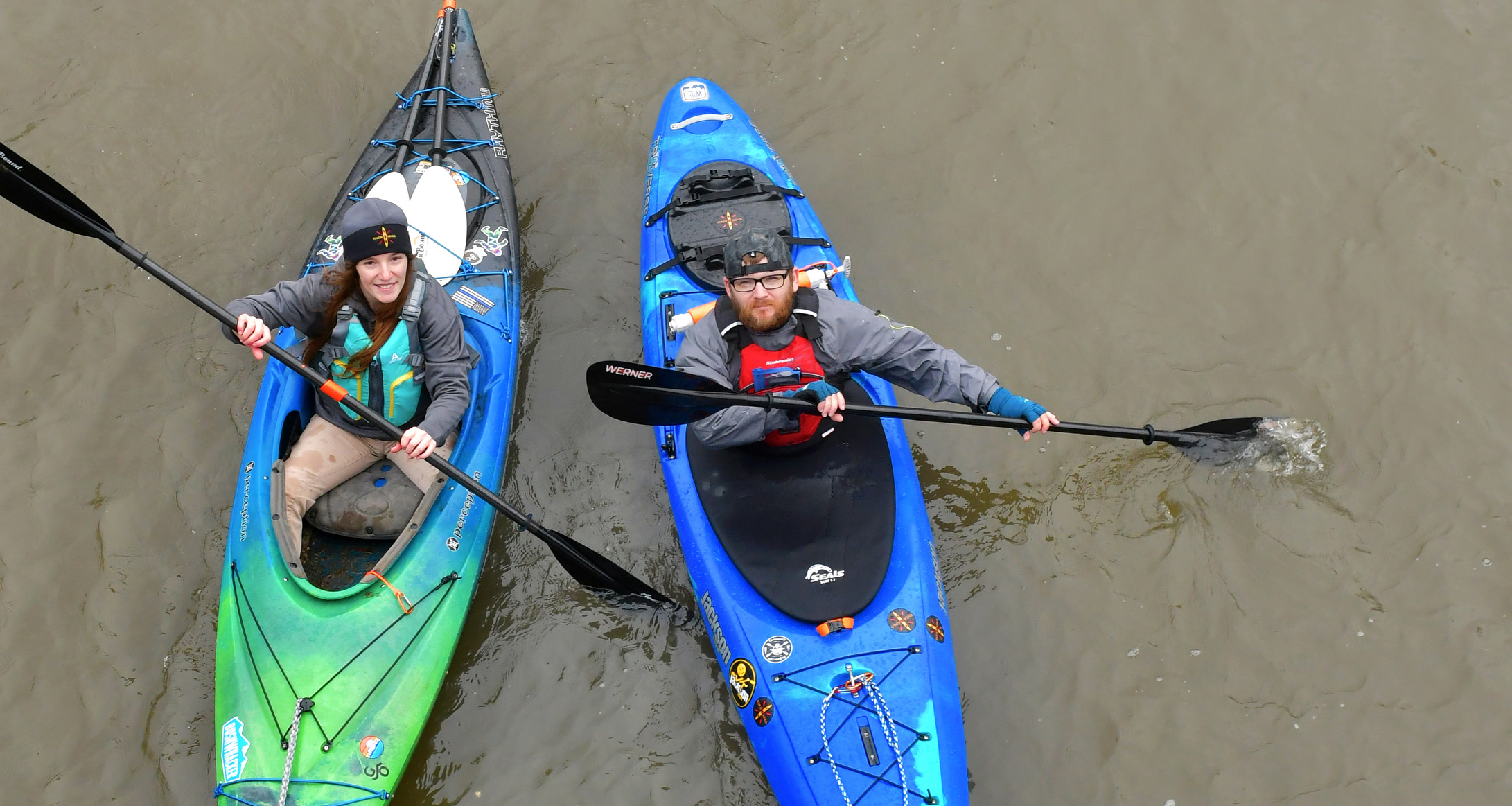Illinois ‘is not a paddle-heavy state,’ but there are places to launch for a safe, satisfactory experience
It may look easy — paddling along on a gentle stream with the sun shining down — but experienced local kayakers and canoers make it clear that preparation is key to having a fun, safe and memorable experience.
Which is the goal, after all.
There are a number of places in central Illinois to drop your canoe or kayak in the water. Andrew Thompson, Bushwhacker’s paddle/camp specialist, lists the Mackinaw River, Illinois River, Vermilion River near Starved Rock State Park and the Sangamon River in Springfield.
“Illinois is not a paddle-heavy state,” he acknowledged, especially in comparison to the likes of Wisconsin, North Carolina, Virginia and Tennessee.
There’s a distinction to be made when it comes to kayaking. There’s the type of touring about on still waters, and then there’s whitewater kayaking. It’s the latter that interests Andy Kravetz, a 53-year-old Peoria journalist.
‘Ideally, get in with someone who’s had experience being out on the water’ — Rich Pestien, Bushwhacker
“I’ve been kayaking for 30 years,” said Kravetz, recalling how he fell in love with paddling as a 9-year-old canoer in summer camp. He became hooked on whitewater after watching Scott Strausbaugh and Joe Jacobi win gold for the United States in two-person canoe slalom at the 1992 Olympics in Barcelona.

“With whitewater, you don’t have to do all that paddling. But you have to know how to maneuver and you do need to be careful,” said Kravetz, whose favorite whitewater course is the St. Francis River in Missouri, some five hours from Peoria. He also cited a whitewater course in Wausau, Wisconsin, also a five-hour drive.
Closer to home is the Marge Cline Whitewater Course in downtown Yorkville, 60 miles southwest of Chicago and a little more than two hours from Peoria. “The course there is for kayaks, canoes and tubers,” Kravetz said.
If you choose to participate in whitewater, know that preparation is critical, said Kravetz. “You need to check on water levels, temperature and the terrain you’ll be covering,” he said. “When it comes to whitewater, rocks and tree limbs below the surface can ruin your day. Wear the right clothes, too. You don’t want something bogging you down if you wind up in the water.”
“We try to warn people there are hazards,” agreed Rich Pestien, the owner of Bushwhacker, the outdoor goods store located at Peoria’s Junction City Shopping Center. “Ideally, get in with someone who’s had experience being out on the water.”
Indeed, don’t be fooled by waters that may look placid enough but pose hidden dangers, said Thompson, 35. “It’s amazing how turbulent the Illinois River really is. You have a top current and an undercurrent along with passing motorboats and barges,” he said.
Thompson recommends that beginners launch their kayaks in calm areas such as Banner Marsh or the lakes at Wildlife Prairie Park. Guided kayaking tours are available at Starved Rock State Park, as well.
Thompson also talked about the “120 rule,” which is when the water and air temperatures add up to at least 120. “That means it’s safe to paddle,” said Thompson. “The danger of hypothermia is no joke. Plenty of people die each year due to cold-water exposure.”
The U.S. Geological Survey at waterdata.usgs.gov provides infor-mation on water temperature and flow rates on specific rivers, streams and lakes, he said.
Pestien suggested that those new to paddling also check out YouTube. “There’s a lot of learning available,” he said.
As for watercraft quality, most kayaks are made of plastic, said Pestien. “Fiberglass used to be what all the boats were made of but plastic has proved to be cheaper and stronger,” he said. While more expensive kayaks are available, Bushwhacker’s line ranges from $500 to $1,800, “right about in the middle of what’s available on the market,” added Pestien.
Look for kayaks to stand the test of time. “A boat can last for years unless you drag it across a gravel parking lot,” said Pestien.
For more information on kayaks and canoes, check with the Illinois Paddling Council at illinoispaddling.org.





